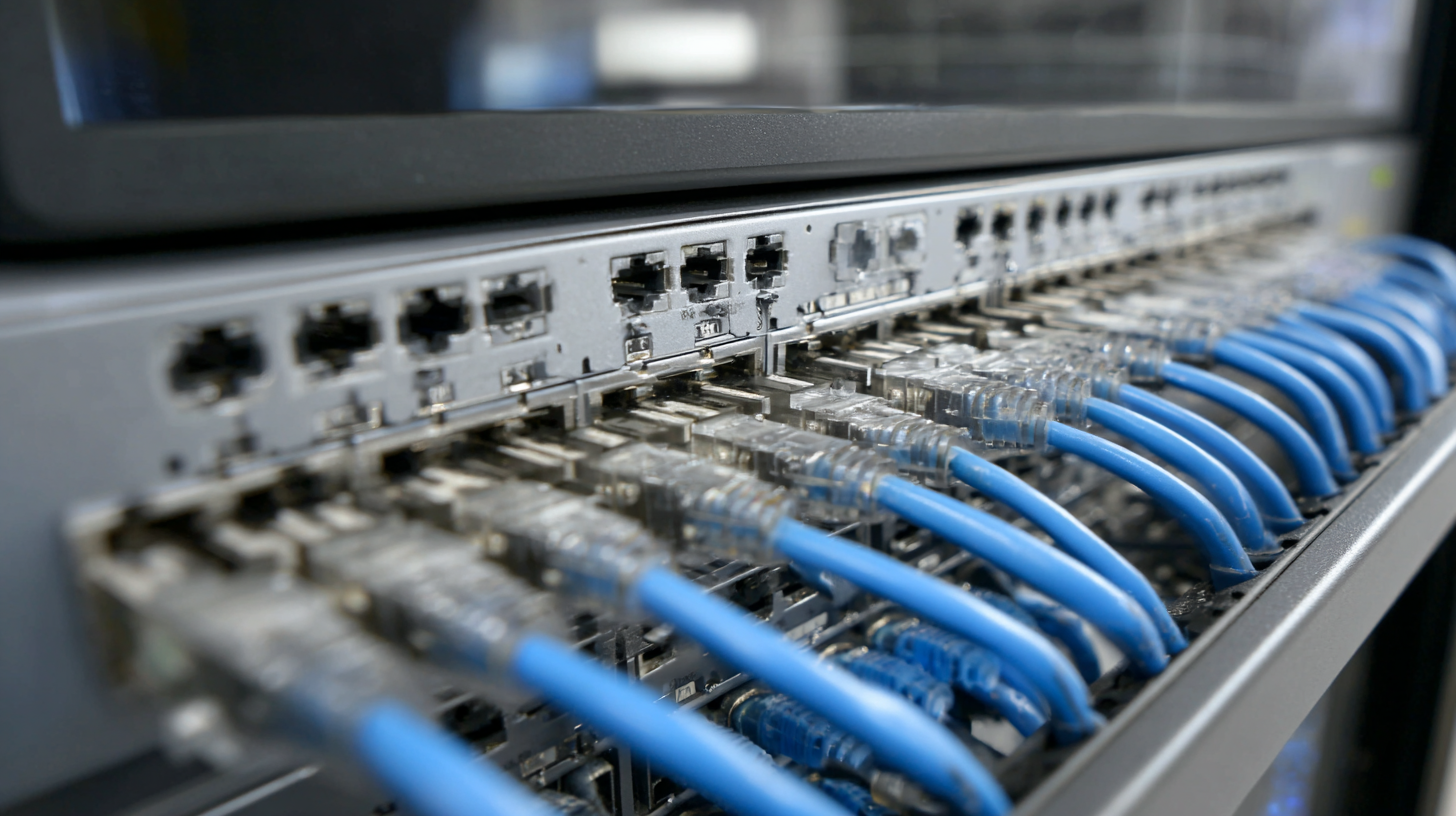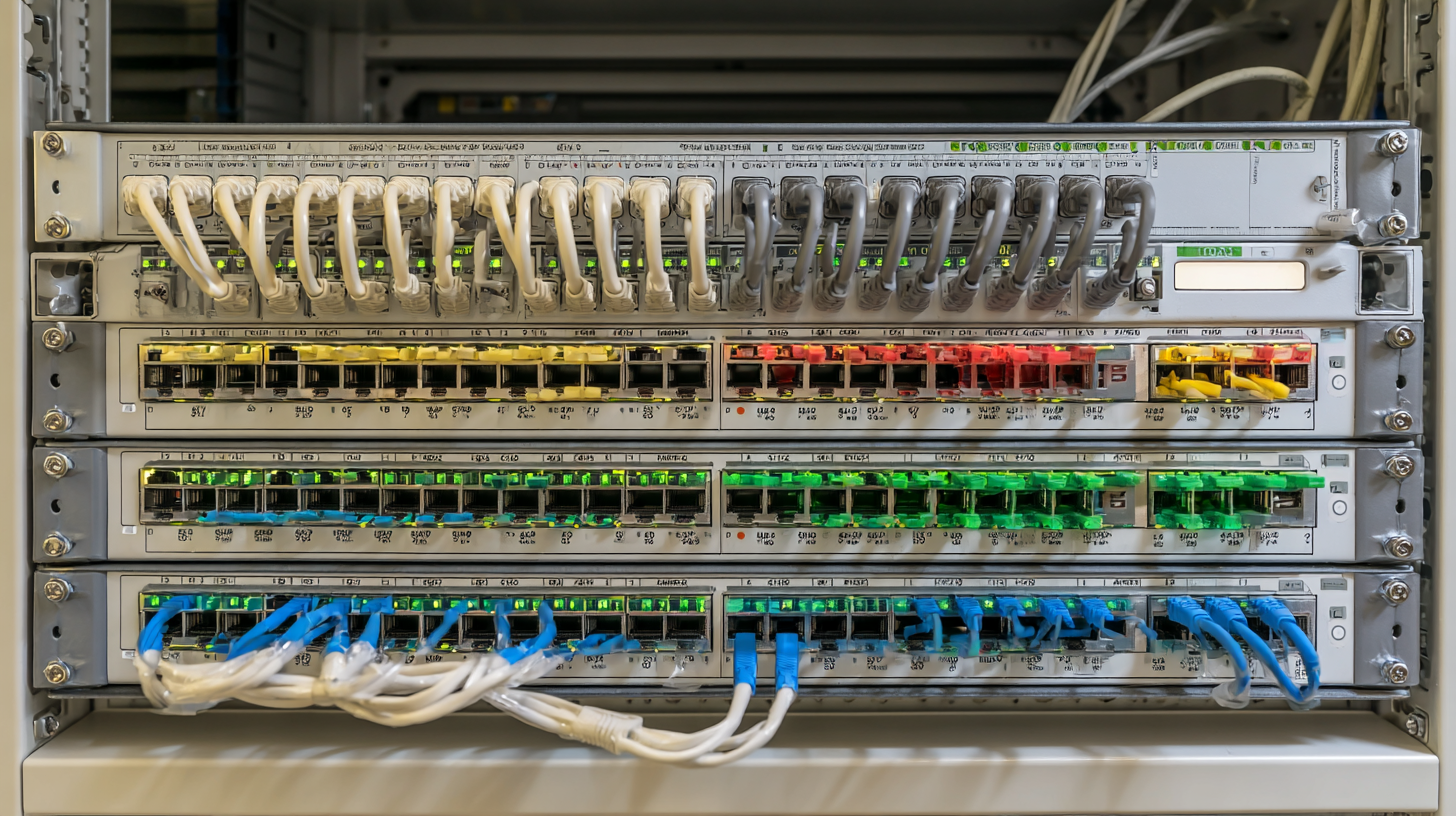
- [email protected]
- Mon - Sat at 7:00AM to 9:00PM
Leave Your Message

In today's fast-paced digital landscape, the backbone of any successful network infrastructure relies heavily on the performance of Network Switches. According to a report by MarketsandMarkets, the global network switch market is projected to reach $38.31 billion by 2026, growing at a compound annual growth rate (CAGR) of 9.6% from 2021. This growth underscores the critical role that network switches play in ensuring efficient data transfer and connectivity within organizations.

However, the value derived from these investments can be significantly enhanced through superior after-sales support and cost-effective repair solutions. Companies that prioritize robust after-sales services not only optimize the operational efficiency of their network switches but also prolong their lifespan, minimizing downtime and reducing total cost of ownership. This guide explores the vital elements of maximizing value through effective support and repair strategies, ensuring that businesses can capitalize on their network infrastructure investments.
Advanced network switches play a crucial role in enhancing efficiency and productivity across various industries. Sectors like healthcare, finance, and education are notably benefiting from high-performance network switches. In healthcare, for example, advanced switches facilitate seamless communication between medical devices, allowing for real-time data sharing and improved patient outcomes. Similarly, the finance industry relies on these switches for secure and fast transaction processing, which is vital in today's fast-paced market. Educational institutions also leverage advanced switches to support robust online learning platforms, ensuring teachers and students remain connected and engaged.
Tip: When selecting network switches for your industry, consider the scalability of the devices to accommodate future growth. This foresight can help prevent costly upgrades down the line.
Moreover, investing in superior after-sales support and cost-effective repairs enhances the value of network switches. Industries benefit not only from the initial performance of their devices but also from reliable support services that ensure minimal downtime. Quick response times and expert assistance can significantly impact operations.
Tip: Establish a relationship with a supplier that offers extensive warranty options and repair services. This can save your business both time and money, ensuring your network remains operational and efficient.
In today's competitive market, superior after-sales support is essential for maximizing the value of your network switches and ensuring customer satisfaction. A recent report from TechValidate shows that 90% of customers prioritize after-sales service as a key factor in their purchase decision. This highlights the importance of having a dedicated support system that can swiftly address any issues that arise after the sale.
One of the primary reasons after-sales support drives customer satisfaction is effective communication. Clear channels for feedback and support create a stronger customer relationship. According to a study by Aberdeen Group, companies that excel in customer service achieve 60% higher profits than their competitors. Providing updated knowledge bases, live chat options, and timely responses can significantly enhance the customer experience.
**Tip:** Ensure your support team is trained to differentiate between standard queries and complex issues. This way, they can resolve most inquiries quickly while transferring more complicated cases to specialized technicians.
Another important aspect is cost-effective repairs. Customers value solutions that minimize downtime and expenses. Research indicates that 70% of customers would rather fix an issue than replace equipment, making it imperative to provide prompt and affordable repair services. Establishing a well-organized repair process can boost both customer trust and loyalty.
**Tip:** Create a repair tracking system that allows customers to check the status of their service requests, enhancing transparency and satisfaction.

In today’s highly connected world, network switches play a pivotal role in ensuring seamless communication across devices. However, the longevity of these switches can often be compromised by wear and tear, leading to costly replacements. Implementing cost-effective repair strategies can significantly enhance the lifespan of network switches. According to a recent report by the Information Technology Industry Council (ITI), 70% of network maintenance costs can be attributed to reactive repairs, highlighting the need for proactive and preventive maintenance approaches.
Incorporating regular diagnostics and preventive maintenance can substantially reduce these reactive costs. Organizations can benefit from using automated monitoring tools that allow for real-time tracking and alerts for potential failures. A study by Gartner indicated that companies adopting proactive maintenance strategies saw a 20-30% reduction in overall maintenance expenses. Furthermore, focusing on training staff to handle minor repairs can extend the life of network switches significantly, with some manufacturers reporting that proper training can reduce failure rates by up to 40%. By embracing these cost-effective repair strategies, businesses not only optimize their network performance but also ensure a sustainable and efficient IT infrastructure.
This chart illustrates the impact of effective after sales support and cost-effective repair strategies on the longevity and value maximization of network switches. The data represents the percentage increase in the lifespan of network switches based on the quality of after sales service and repair strategies implemented.
In the rapidly evolving realm of network technology, real-world success stories illuminate the transformative impact of network switches on businesses. These devices go beyond mere connectivity; they serve as the backbone of efficient operations, enabling companies to harness the full power of digital communication. As organizations increasingly adopt 5G and fiber-optic technologies, the functionality and reliability of network switches become paramount. Notably, strategic partnerships between technology providers and operators are essential for maximizing the deployment of these solutions, ensuring that they deliver robust performance tailored to specific industry needs.
Consider the success of various enterprises that have integrated advanced network switches into their infrastructure. From enhancing operational efficiency in manufacturing to facilitating seamless communication in large corporations, these devices have proven their worth. However, true value is unlocked not just through initial investment, but through superior after-sales support and cost-effective repairs. Companies that prioritize these elements are better positioned to maintain their network integrity, allowing them to focus on innovation and growth while minimizing downtime and operational disruptions. Engaging with reliable partners to ensure ongoing support will ultimately define the success of businesses in this competitive landscape.

When investing in network switches, the total cost of ownership (TCO) goes beyond the initial purchase price. Effective after-sales support plays a crucial role in maximizing return on investment (ROI) by reducing long-term operational costs. Quality support ensures that organizations can quickly troubleshoot and resolve any network issues, minimizing downtime and maintaining productivity. By opting for switches backed by strong customer service, businesses are not only purchasing a product but securing a partnership that is vital for ongoing efficiency.
Additionally, cost-effective repairs further enhance the value derived from network switches. A robust warranty and readily available spare parts can significantly lower the financial burden associated with equipment failures. This strategy not only preserves budget allocations but also extends the lifecycle of the hardware, yielding better ROI. Incorporating a proactive maintenance plan supported by experts can help organizations anticipate and mitigate potential issues before they escalate, reinforcing the notion that quality support is integral to smart investment decisions in network infrastructure.
| Switch Model | Initial Cost ($) | Warranty Period (Years) | Average Repair Cost ($) | Estimated TCO ($) | ROI (%) |
|---|---|---|---|---|---|
| Model A | 500 | 5 | 150 | 1,000 | 25 |
| Model B | 700 | 3 | 200 | 1,600 | 18.75 |
| Model C | 600 | 4 | 120 | 1,080 | 20 |
| Model D | 800 | 2 | 250 | 1,950 | 14.29 |
| Model E | 900 | 5 | 180 | 1,800 | 50 |